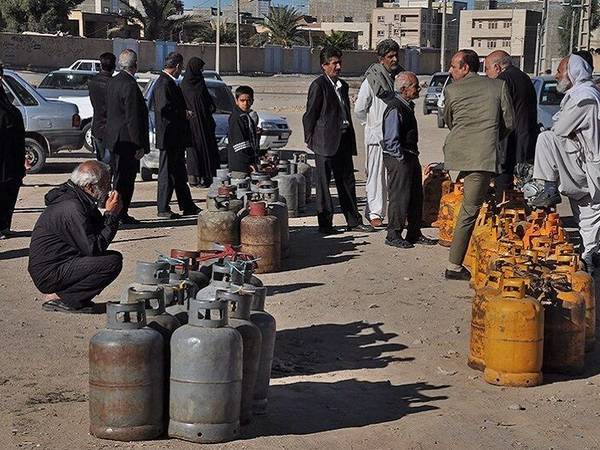The government decision to increase the price of liquid gas (LPG) cylinders from $1.2 a cylinder to $8 this week has hit Iran's poor as winter takes hold.
The decision has hit hardest the poor southern provinces which do not have access to LPG at home. Ordinary workers barely make $150 a month and can't afford to pay the higher price for fuel they need for cooking and in some cases for heating their homes.
A local official with the Iranian oil ministry said that the inhabitants of Hormozgan are required to register in an electronic system in order to be given subsidized LPG but with many of the poor living in shanty towns, they remain locked out of the system.
If registered, each household will receive a quota of four subsidized LPG cylinders per month but a restaurant owner in the province told Aftab News that the allocated amount is still not enough and he has to find the extra fuel for his job in the black market at exorbitant prices.
Despite the criticisms, Iranian officials defended their decision, saying the distribution of LPG has been “adjusted” in an attempt to fight smuggling. The Iranian government has sold fuel and electricity at extremely low prices for decades, partly because of inertia and partly due to fears of popular protests. In 2019, a gasoline price hike led to days of nationwide protests. Security forces killed at least 1,500 people, which badly eroded the government's legitimacy. But as people's incomes have dwindled by high inflation since 2018, now the government faces even a tougher choice to raise prices.
The sharp increase in prices has also raised serious concerns among environmental activists.
Sirous Zareh, an environmental activist in Fars province warned that the drastic increase of the LPG price will practically leave no choice for the local communities living on the edges of habitats to use wood and tree trunks instead of the expensive gas.
Logging and deforestation will multiply as a result of the government’s new policy, Zareh predicted.
He stressed that while Iran’s large gas resources could serve as “a protective shield against indiscriminate deforestation,” the economically vulnerable sections of the society will have no other way but to stop gas consumption and start using forest fuel at their houses.
It comes while some of Iran's southern provinces such as Hormozgan and Khuzestan abound with gas resources, Iran the second richest gas nation in the world.
Iran has a serious shortage of natural gas which is in decline because of decades of inadequate investments and lack of Western technology to increase extraction in Iran's main underwater gas fields in the Persian Gulf. Years of various sanctions and mismanagement have prevented the necessary upgrades of gas platforms.
The government is juggling between ever-increasing domestic consumer and commercial demand and its need for power generation, exports and using needed gas for oil production.
Despite the celebratory and optimistic rhetoric of the Iranian regime officials about Tehran’s increasing ties with non-Western partners, even the Chinese and the Russians have not been willing to render any significant assistance to boost Iran’s gas and oil productions.
